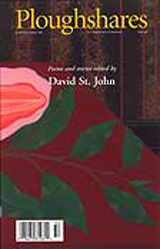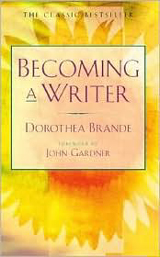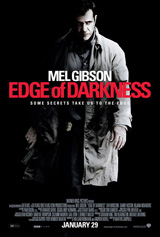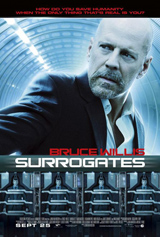Risk! Risk anything! Care no more for the opinion of others, for those voices. Do the hardest thing on earth for you. Act for yourself. Face the truth. —Katherine Mansfield
In February, after working in various editorial positions (including “Editor”) for more than nine years, I left Boxoffice Magazine, a trade publication for the movie theater industry. Officially, I had decided it was “time to move on to new challenges.” Specifically, after three-and-a-half years of grad school, I need to complete my thesis. The latter reason is absolutely true. I didn’t realize at the time, though, how true the former is, too.
A few months after leaving Bx (an internal abbreviation preferred over the more obvious B.O.), DGA Quarterly approached me to write an exhibition-related article for the craft journal of the director’s guild. (One of my critics at Bx—thanks, Wade!—recommended me to the editor, with whom he serves on the Los Angeles Films Critics Association.) Being very familiar with the industry, companies, and players involved, I was happy to do the piece—and even more happy to supplement my nonexistent income.
I researched the topic (luxury cinemas—we’re talking valet parking, reclining seats, and wait service for $35 per ticket), set up and transcribed interviews, and turned in 1,500 words—a little more than the assigned word count, but I know from experience that it’s easier to cut than it is to pad.
A week later, I received an edited version of the article with notes! I was being asked to take a second pass to address some questions and incorporate some suggestions.
Do not mistake my surprise: I was delighted to be edited.
I was never edited at Bx. Staff and time constraints limited the review process to copy-editing at most. The most editorial input I received was when I submitted an article on which I was working to my graduate nonfiction writing class at USC. It pains me to admit this, but I used to regularly pull all-nighters to write cover stories that were due at the printer the next morning. Too often, by the time the magazine went to print, I was the only one who had ever read the words I had written.
So I replied to my DGA editor thanking him for helping me to take the piece to the next level. He likewise appreciated my seeing it this way: “I so appreciate your understanding that this is to take the story to the next level. So many writers are resistant to doing that and take notes personally, which is not it at all. We’re both just trying to make it better.”
So, lesson number one: appreciate your editors. They will appreciate that you appreciate them.
The DGA notes really were helpful. In addition to pointing out areas in need of expansion and/or clarification, overall I was encouraged to make the piece more compelling by a) establishing the context of flat admissions and the amenities added to combat that, b) suggesting healthy skepticism earlier, and c), which I learned less from the notes than from the line editing, loosening up the language—i.e., “underserved demographic” becomes “aging boomer demographic” and “in-theater dining and wait service” becomes “rattling dinner plates and roaming waiters.” (This will all make more sense when you can read the article—I’ll post a link when it comes out.)
In working with DGA, I realized that I had been playing it safe as a writer, not only in content but even in word choice. I wasn’t taking any risks. Yet the qualities I admire in writing are bold ideas communicated with limber language. As my faculty adviser on Southern California Review said in an unrelated conversation, “Never write safe things. Never publish safe things. Never read safe things.”
Lesson number two: take risks.
This became my post-Bx challenge—to take risks, to stretch as a writer, to reach outside of my comfort zone, to no longer rely on clichés like “to reach outside of my comfort zone.”
In my first application of today’s lesson number two, I relearned lesson number one.
This week I reviewed The Wackness for LA CityBeat. Set in New York City in the summer of 1994 and centering around a teenage drug dealer, the indie flick’s presskit included a glossary of slang terms like “ill,” “mad,” and, natch, “wack.” So, contrary to Grammar Girl’s advice on the use of slang, I thought it would serve as an appropriate opportunity to liven up my prose.
Instead of saying, “While his classmates leave the city for Amsterdam,” I wrote, “While his classmates bounce the city …” And instead of “Luke … has a crush on Stephanie,” I wrote, “Luke … crushes on Stephanie.”
(In my defense, Grammar Girl’s argument is that the use of slang dates your writing. My stylistic choice is closely related to the subject of the piece, and besides, the review probably has a shelf life of less than a week.)
My word choices, though, my editor said, stopped him cold.
We discussed it over email; I explained that no, these weren’t coinages of my own but borrowed from the language of the characters in the film; and ultimately the phrasings stayed. But he was right to ask: I’m still not sure the slang for “bounce” was correctly used—it should be more like, “This party is lame. Let’s bounce.”
These may seem like minor issues—I’d be embarrassed if I experienced a breakthrough by borrowing language that I’m way too old to use myself—but something as simple as word choice can mean the difference between lazy, dry reportage and lively prose.
Caught in the ’Net
As we worship at the altars of the desks of famous authors and seek the perfect environment in which to craft our own masterpieces, the book blog over at the Guardian thinks perhaps we doth protest too much.
I write my first drafts out in long-hand. (I find pen-to-page less intimidating than a blinking cursor on a computer screen, and I’m more productive away from my internet-connected laptop.) The New York Times reviews a couple of digital pens that saves your handwritten notes as digital files.







